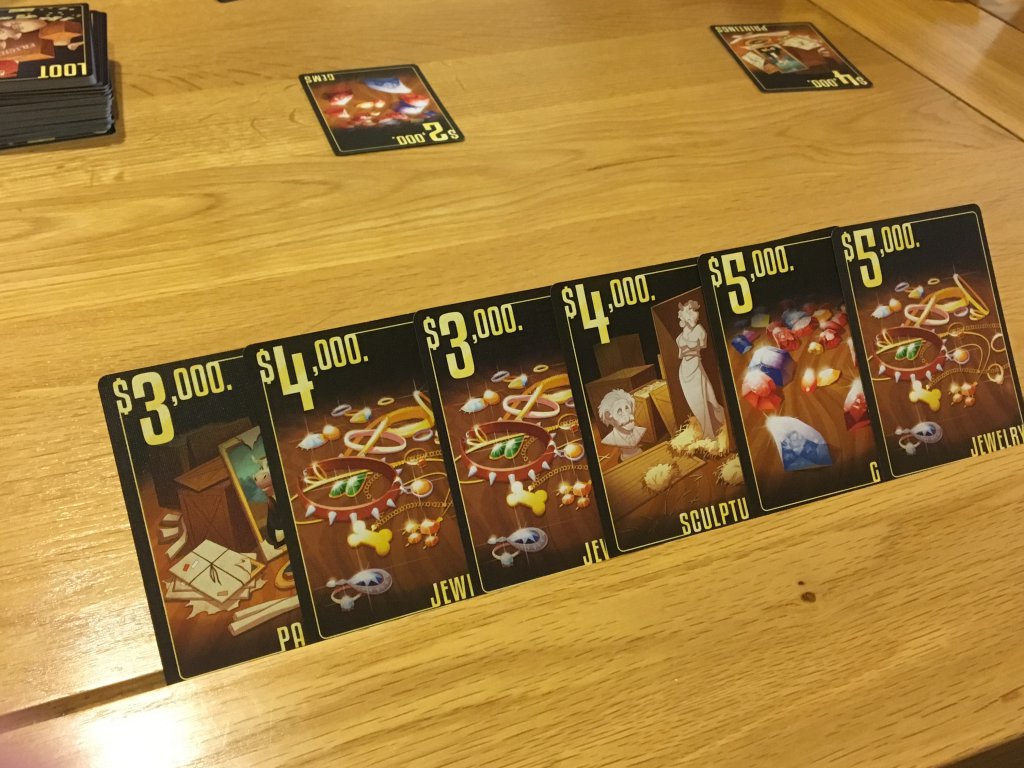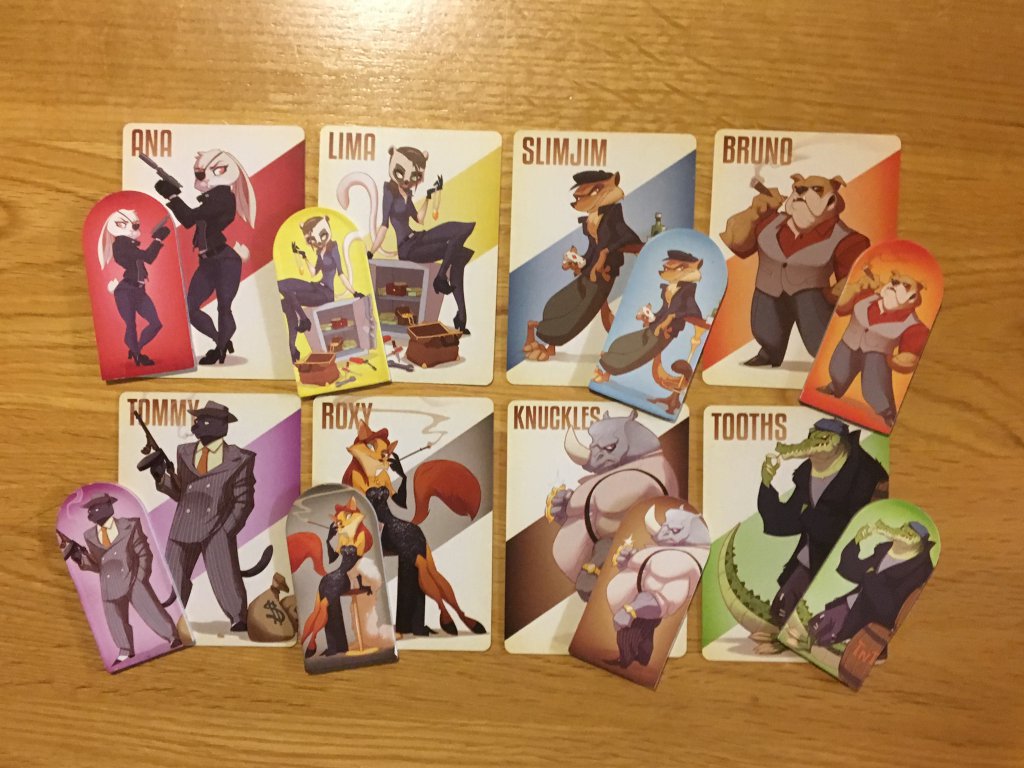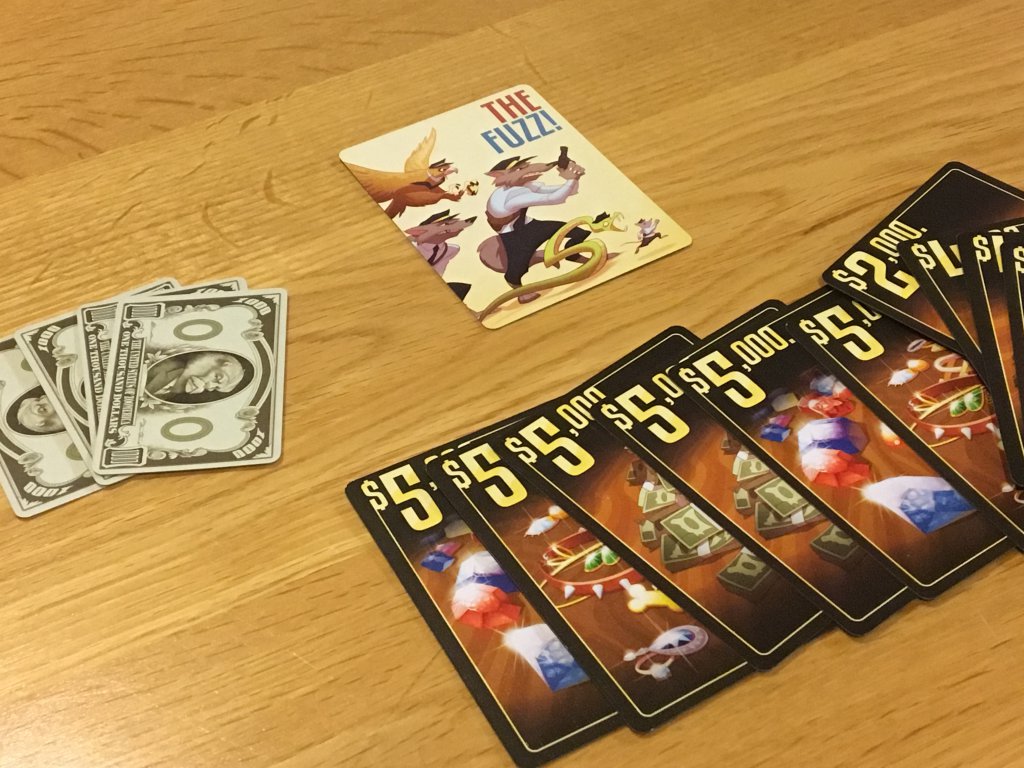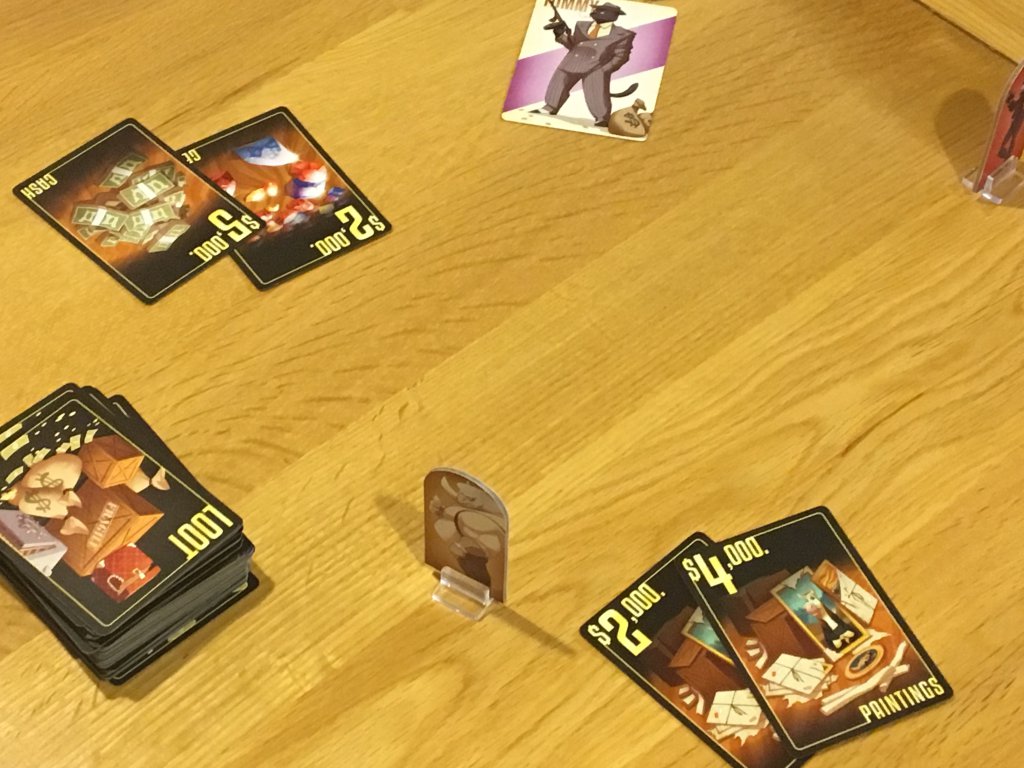Goodcritters — Those Pesci animals!
Although party games come in many shapes and sizes, they do tend to be on the lighter end of the spectrum, which can lead to a less satisfying outcome for more experienced players. It came as a surprise to me — thanks to the simplicity of play — that Goodcritters features tight, satisfying gameplay.
Let me tell you more about Goodcritters, this intriguing game of anthropomorphic gangsters, greed and good times with friends.
In Goodcritters, each player takes on the role of a member of the same gang. Everyone shares the same objective, which is to gain as much loot as possible over the course of the game, which is slightly randomised and will always vary based on player count. During setup, a leader is appointed at random and will be required to draw loot cards from the deck at the beginning of the first turn. The leader can (and will) change throughout the game, with whoever holding the first player token at the beginning of a turn taking responsibility to draw the loot cards.
Next, the leader of the gang distributes the loot cards (which have a value of $2,000-$5,000) among the players. The leader can hand out loot in any way they want – however unfair it may seem. During this phase, players can coerce, threaten, bargain and jostle for position as much as they like, which leads more or less directly into the next phase of play. During the main phase of each round in Goodcritters, the players will each use cards to decide what their character will do, either in support or opposition towards the current leader, or through options that allow them to act alone in various ways.
Now, what is perhaps most interesting about this is that players are free to lie to each other about which card they have chosen to play. Players can even swap their cards in response to other players putting down cards and making threats, as long as when all players have agreed that their cards are set, they are all turned over at the same time. There’s another piece in play here too, which is known as the threat marker – these standees represent each of the players in the game and are used in conjunction with the “Rob” card, or, on other occasions, to simply feint a Rob card when actually the player is planning something else.
Among the other options available to players are votes of “Yes” or “No” as well as to “Skim” or “Guard.” In summary, voting yes or no will cast a vote in either in favour or against the current leader, whilst Skim allows one of the players to draw the top card from the loot deck. The interesting thing about Skim is that only the first player to use it (going clockwise from the leader) will get the benefit. A player who uses the Rob card will be able to pinch a card from the player who has the robbing players threat standee in front of them, unless they use the Guard card, which a player can use to protect themselves from any number of Rob attempts.
Once the cards are all played, each one is resolved in turn, with a number of possible outcomes. Firstly, the total number of yes and no votes is counted and if the vote is a majority no, then the leader token will move on and the loot will be placed back into the middle to be redistributed by the next leader. If the majority vote is a yes, then the leader will stay as they are and the loot distribution will be finalised. If the vote is a tie, then the loot distribution is finalised, but the leader token will move on all the same. Naturally, only yes or no votes count towards the count, so it’s entirely possible that a majority vote might pass based on one single vote, if everyone else chooses to Rob, Guard or Skim.
It’s well worth understanding that everything outside of the basic rules in Goodcritters is subject to outside influence. In a variant mode that you’ll almost always use, players will have access to a stack of $1,000 dollar bills that can be used to bribe others with. These can be used to formally request a yes or no vote (that must be adhered to in order to be paid out.) It’s just as possible to make side deals or agreements about what might happen when you’re the leader though – for example you might ask everyone for a no vote this round and promise a bonus loot card for those who go through with it. There’s nothing in that circumstance to force you to actually dish out the loot cards – after all, circumstances change and the life of the boss is hard!
The art of Goodcritters is all about maintaining control of the leader token for as long as possible, whilst also ensuring that you increase your own share of the loot at a faster rate than your opponents. This is achieved through a fine balance between ensuring a reasonably fair split of loot, the occasional bribe here and there and by shrewd use of the Rob and Skim actions. Asking a player to vote yes rather than skim in return for a guaranteed $2,000 might be a good play for one or two rounds, but only if you think you can get more than the same amount back by allocating loot to your own stash!
The simple components and straightforward rules make Goodcritters very easy to learn and teach, but if your group enjoys bartering and negotiation, then the game can rapidly become very intricate. Robbing (or at least threatening to) and bluffing are key elements, as is knowing when to skim. Human psychology makes some leaders more generous than others and everyone has their own way of getting what they want. These factors make Goodcritters a superb party game that I think will appeal to anyone who is comfortable in an environment where they will need to lie and cheat. As such, Goodcritters is my current favourite party game, period.
Goodcritters is available now, find out more about it on the Arcane Wonders website.
Love board games? Check out our list of the top board games we’ve reviewed.





Comments are closed.